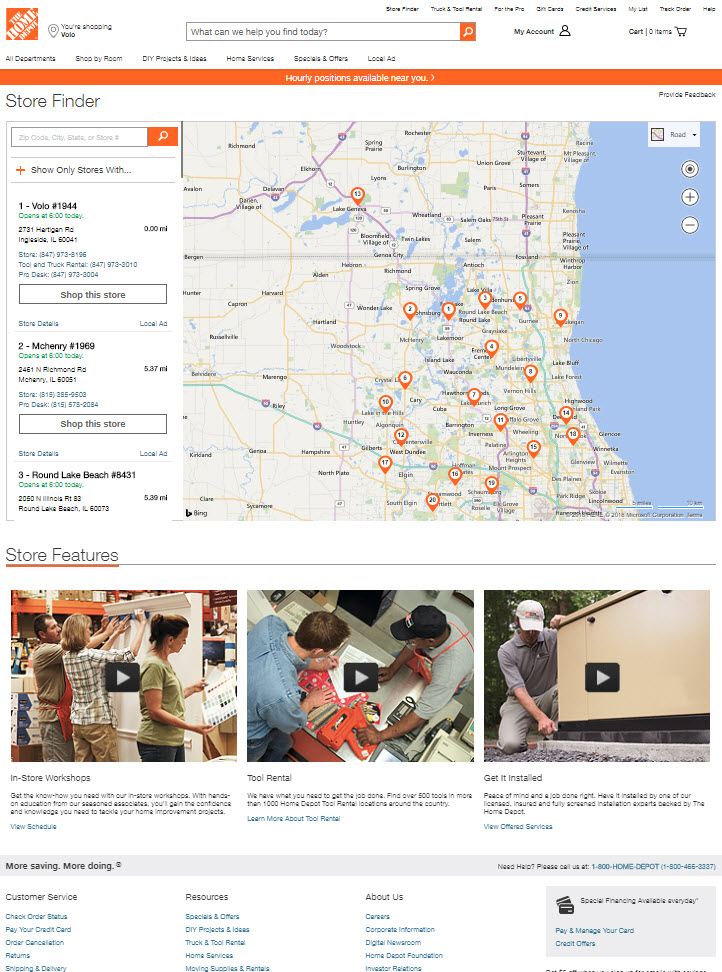Author: Jill Kocher Brown / Source: Practical Ecommerce
If you have more than one physical location, in addition to your ecommerce site, you need a store locator. Slapping all your store addresses on a single web page and calling it done doesn’t cut it for shoppers or for natural search performance.
An optimal store locator should be searchable for your customers and also crawlable for the search engines. Shoppers on your site want an experience that targets their location or at least offers them an easy way to select a store, such as a location search box to enter their zip code.

To accommodate crawlers — and to drive local consumers to your stores instead of your competitors’ — your location finder must have a clear crawl path to an individual page for every store location.
That doesn’t mean you have to contract with an expensive local-search vendor if you only have a handful of stores. Use the examples below to create your own. If you have more than 10 stores, though, you may want to consider a more scalable solution that provides an optimal on-site location experience for searching and browsing as well as data distribution to the necessary location players — map providers, yellow page databases, social sites, there are over 300 different entities that deal with location on the internet. You want them all to have the correct location data.
Optimal Location Directory
The idea is to provide a crawl path that organizes and provides access to a unique page for every store and to organize your locations into manageable chunks.
If you have five locations, that’s pretty easy. You need only one location landing page with five links to five separate location pages, one for each store.
If you have 500 locations, the task is harder. Let’s say your stores are located in 32 U.S. states. Your location finder would need to link to 500 individual pages. That’s an overwhelming list for anyone to navigate — yes, shoppers will be navigating it, too.
Instead, create a short journey that takes shoppers and crawlers alike from the location landing page to one that lists the states in which your company has stores. From there, clicking on a state would result in another page that lists the cities in which stores are located, including the store name…
Audience Team
The digital audience insights you need to build, manage and market to your digital audiences.

